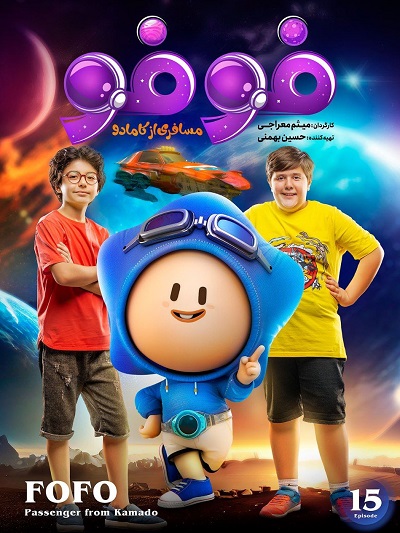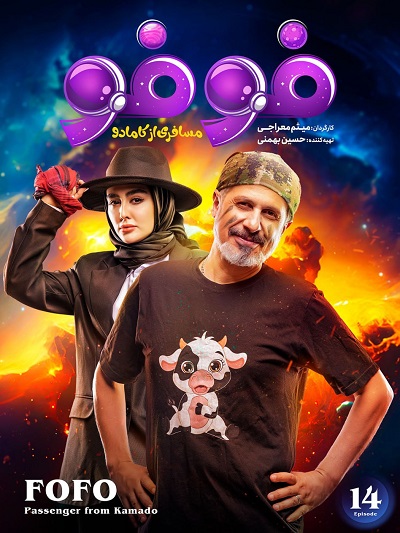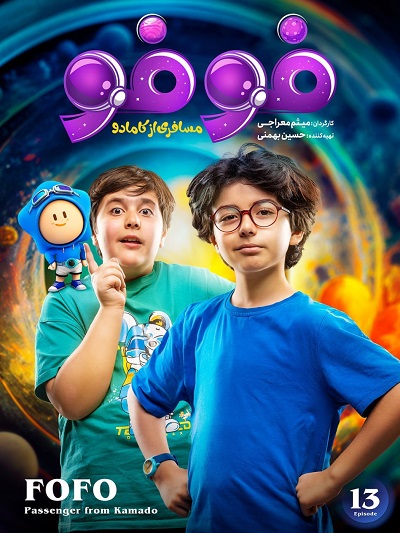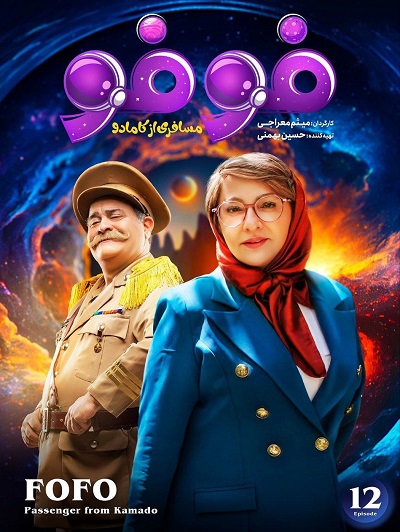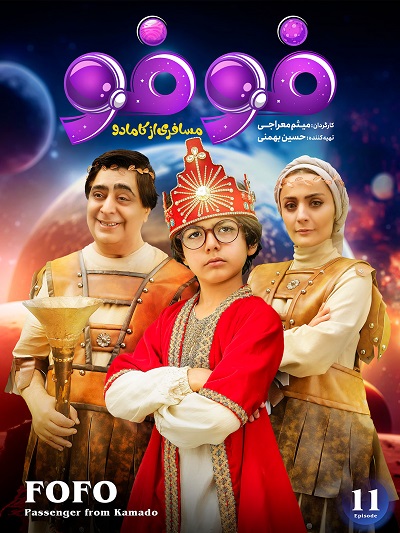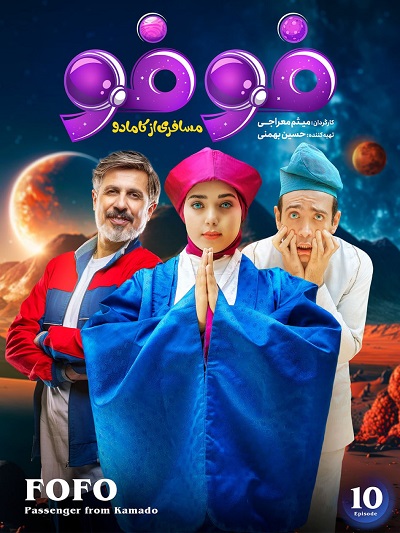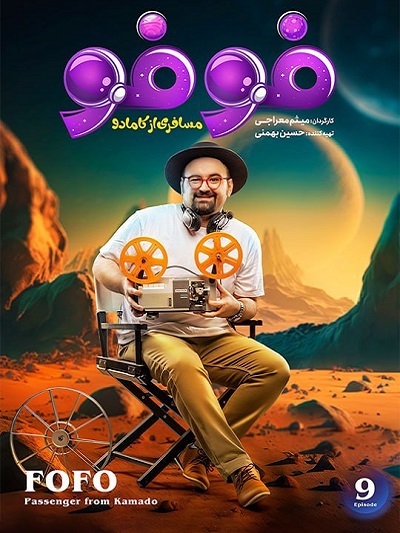Fofo Mosaferi Az Kamado 08
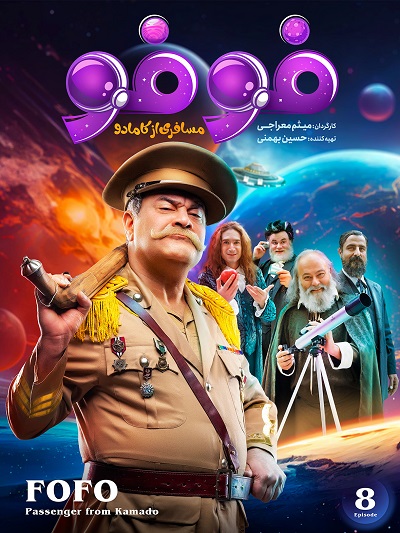
Fofo Mosaferi Az Kamado is a new social comedy series with a different theme. This is the first time in Iran that a series is made with real 3D animation technique and using special visual effects. Javad Razovian, Elika Abdul Razzaghi, Behrad Kharazi, Pasha Jamali, Reza Shafiejam, Elsa Firouzazer, Setara Hosseini, Sara Moqrabi and Youssef Sayadi are among the actors who have played roles in “Fofu Musafari from Kamado”. Also, Farbod Eshghi, Vihan Mearaji and Tamara Yekta are the child actors of this series. About the story of this series, a short summary is provided: “Fofu is stolen from the planet Kamado by the Mitamitas and brought to Earth.”
Director
Meysam Meraji
Cast
Behrad Kharrazi
Elika Abdolrazaghi
Elsa Firouz Azar
Javad Razavian
Laleh Saboori
Pasha Jamali
Reza Shafi-Jam
Yadollah Shadmani
Yousef Sayadi
Cinema was only five years old when it came to Persia at the beginning of the 20th century. The first Persian filmmaker was Mirza Ebrahim Khan Akkas Bashi, the official photographer of Muzaffar al-Din Shah, the King of Persia from 1896–1907. After a visit to Paris in July 1900, Akkas Bashi obtained a camera and filmed the Shah’s visit to Europe upon the Shah’s orders. He is said to have filmed the Shah’s private and religious ceremonies, but no copies of such films exist today. A few years after Akkas Bashi started photography, Khan Baba Motazedi, another pioneer in Iranian motion picture photography emerged. He shot a considerable amount of newsreel footage during the reign of Qajar to the Pahlavi dynasty. The first public screening took place in Tehran in 1904, presented by Mirza Ebrahim Khan Sahaf Bashi. He arranged the screening in the back of his antique shop. In 1905, Sahaf Bashi opened the first movie theater in Cheragh Gaz Avenue in the national capital. In 1909, with fall of the Mohammad Ali Shah Qajar heir of Mozaffar ad-Din Shah Qajar and the success of the constitutionalists, Russi Khan lost his support. Consequently, his film theatre and photography studios were destroyed by the public. Soon after, other cinema theatres in Tehran closed down. Movie theatres sprang up again in 1912 with the help of Ardeshir Khan, an Armenian-Iranian. In 1904, Mirza Ebrahim Khan Sahhafbashi opened the first movie theater in Tehran. The cinematographic camera was introduced to Iran in 1929, as yet another tool of modernization. After Mirza Ebrahim Khan, several others like Russi Khan, Ardeshir Khan, and Ali Vakili tried to establish new movie theaters in Tehran. Until the early 1930s, there were little more than 15 theatres in Tehran and 11 in other provinces. In 1925, Ovanes Ohanian, decided to establish the first film school in Iran. Within five years he managed to run the first session of the school under the name “Parvareshgahe Artistiye Cinema”.
In 1930 the first Iranian silent film was made by Professor Ovanes Ohanian called Abi and Rabi. In 1933 he made his second film titled Haji Agha. Later that year, Abdolhossein Sepanta made the first Iranian sound film, entitled Lor Girl, which was released in 1933 in two Tehran cinemas, Mayak and Sepah. The story of the film was based on a comparison between the state of security in Iran at the end of the Qajar dynasty and during Reza Shah period. Sepanta would go on to direct movies such as Ferdowsi (the life story of the most celebrated epic poet of Iran), Shirin and Farhad (a classic Iranian love story), and Black Eyes (the story of Nader Shah’s invasion of India). In 1937, he directed Laili and Majnoon, an Eastern love story similar to the English story of Romeo and Juliet. The present day Iranian film industry owes much of its progress to two industrious personalities, Esmail Koushan and Farrokh Ghaffari. By establishing the first National Iranian Film Society in 1949 at the Iran Bastan Museum and organizing the first Film Week during which English films were exhibited, Ghaffari laid the foundation for alternative and non-commercial films in Iran. Early Persian directors like Abdolhossein Sepanta and Esmail Koushan took advantage of the richness of Persian literature and ancient Persian mythology. In their work, they emphasized ethics and humanity.




